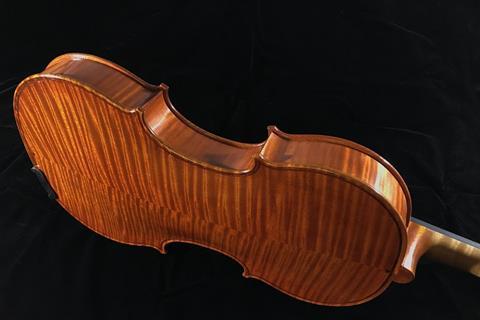John Simmers shares his wisdom on finding a balance between antiquing and not antiquing

These tips are an extract of a longer article in the November 2018 issue of The Strad. To read in full, download the magazine now on desktop computer or via the The Strad App, or buy the print edition
On the importance of wood texture
I recommend that you get rid of the sandpaper and think twice before picking up a scraper. Violins are made with cutting tools, and I don’t go to a lot of effort to hide that. I try to leave some toothed plane and scraper marks on the outside of the ribs to help add some texture. The scroll is a pretty obvious place to leave gouge marks and I don’t get too carried away when refining the sides of the pegbox as I like to leave some opportunities there, too.
On achieving a well grounded look
If you don’t want your instrument to look like it’s radioactive you must find a way to get a nice dark ground, without killing the reflectivity of the wood. Once you have achieved that, I’ve found that it almost doesn’t matter what you put over it, as long as it’s transparent and well applied.
On varnishing
I use a fairly thick, pigmented oil varnish and although I apply it with a brush, I get the best results by moving it around with my hand before it dries. This can leave a nice texture that will build up with each coat. Because I’ve hopefully achieved a lot of colour in my ground, I don’t need a very intensely coloured varnish on top to get the look I’m after.
On schmutz, dirt or patina
When antiquing, dirt is pushed into any indentations, be they scratches, chips or toolmarks, to recreate the effect you see on old instruments. All those toolmarks we left before varnishing now become opportunities to add some patina to the surface, add contrast and depth to the colour, and to soften the overall look. I usually use an oil medium when applying my shmutz. When wiping it off, if any areas look too obvious, I tap my fingers on them to remove some material.
To read the full article in The Strad’s November 2018 issue, download the magazine now on desktop computer or via the The Strad App, or buy the print edition










































No comments yet